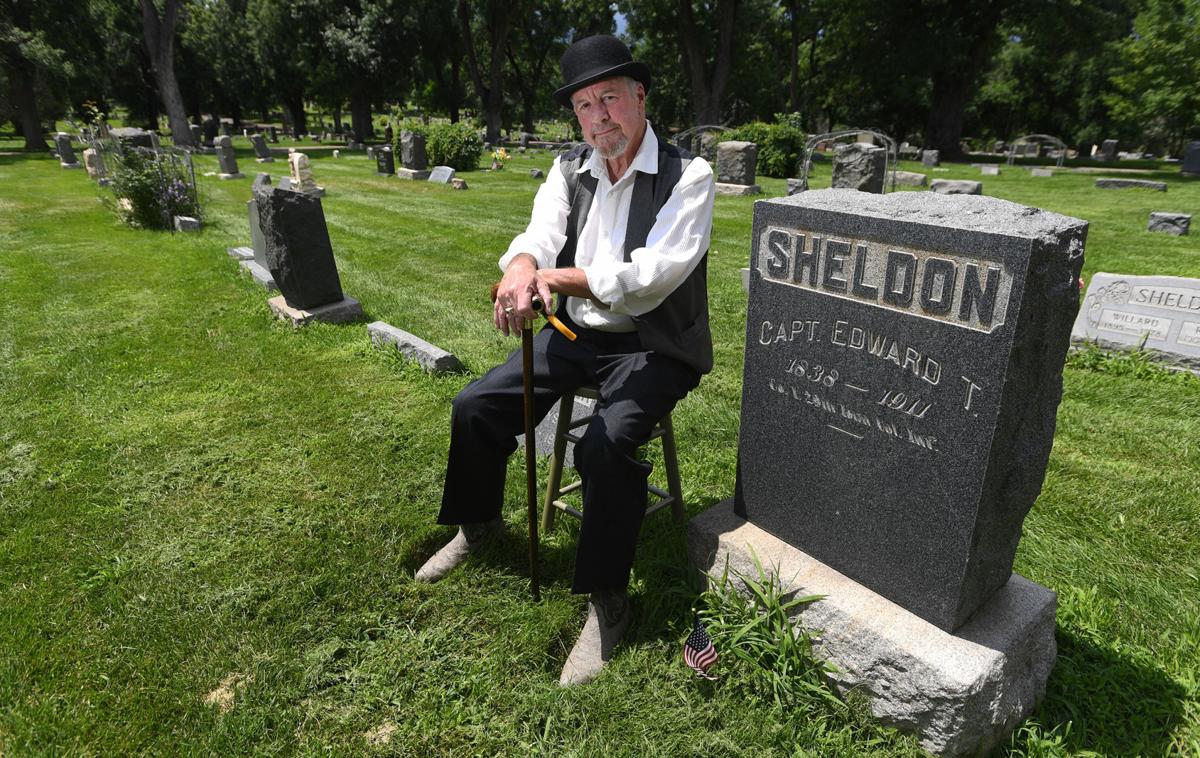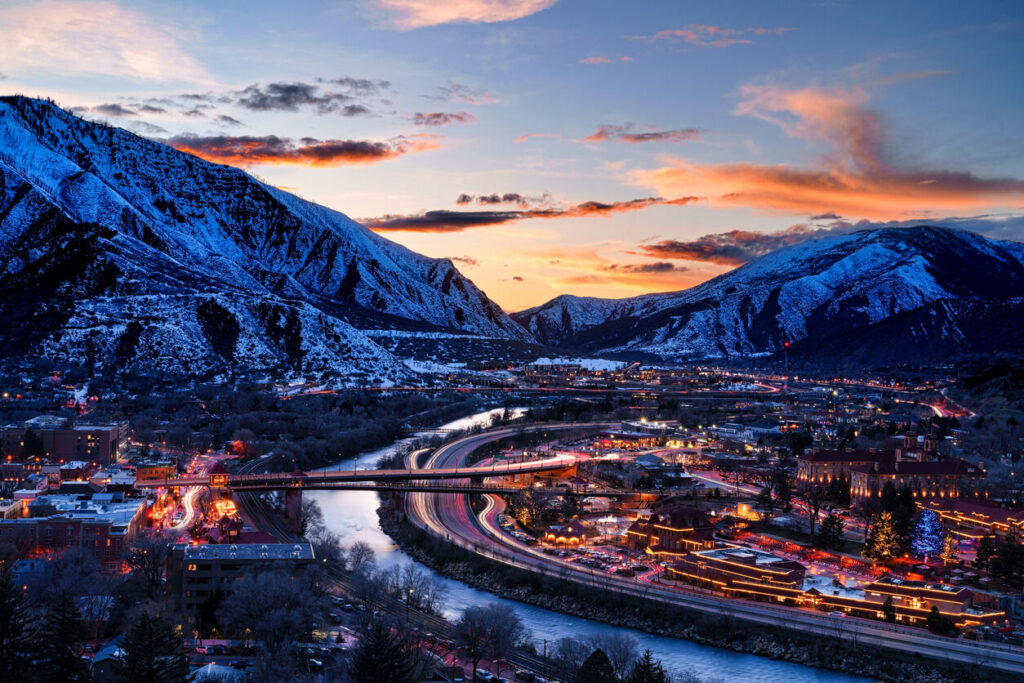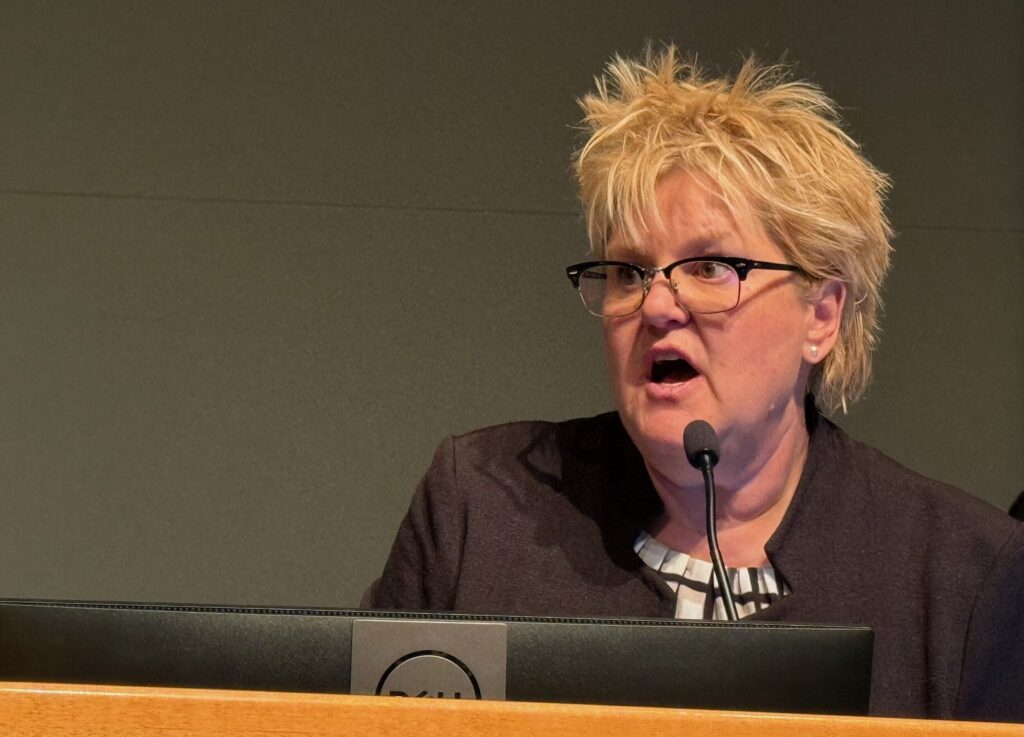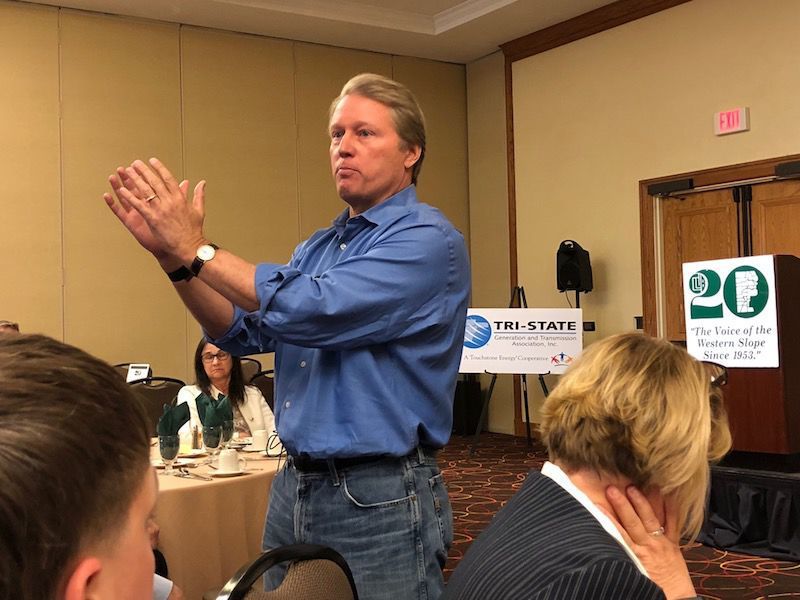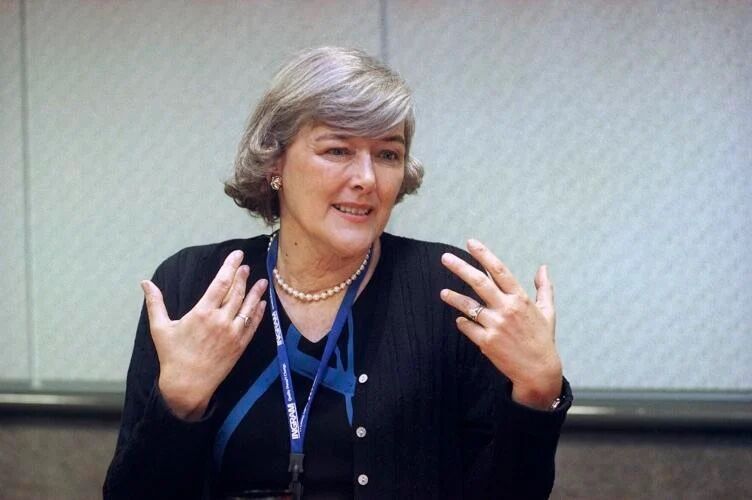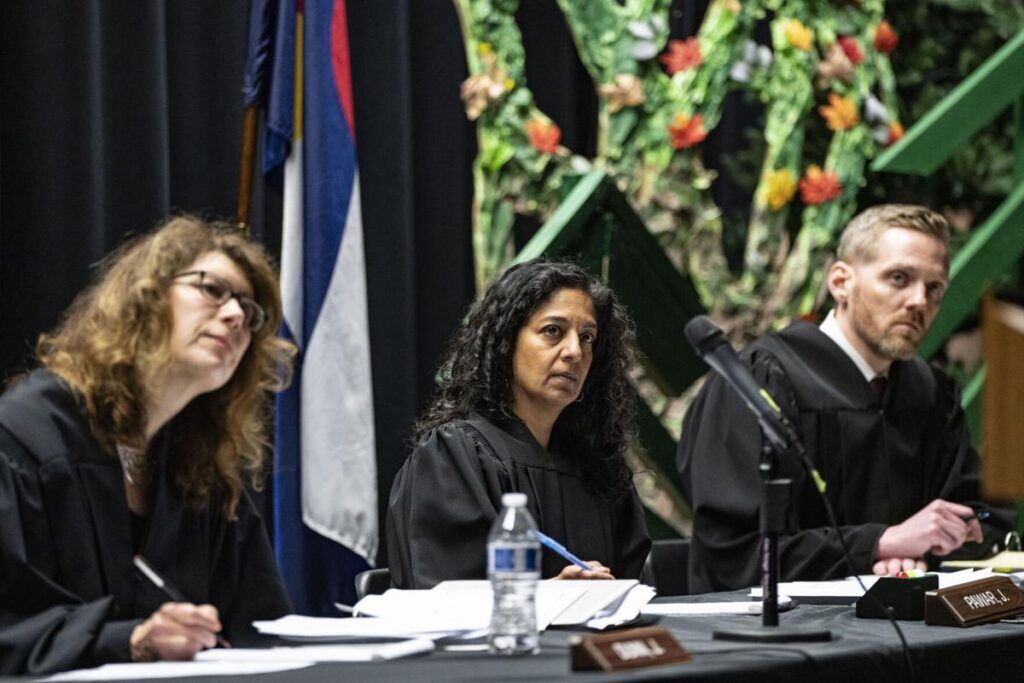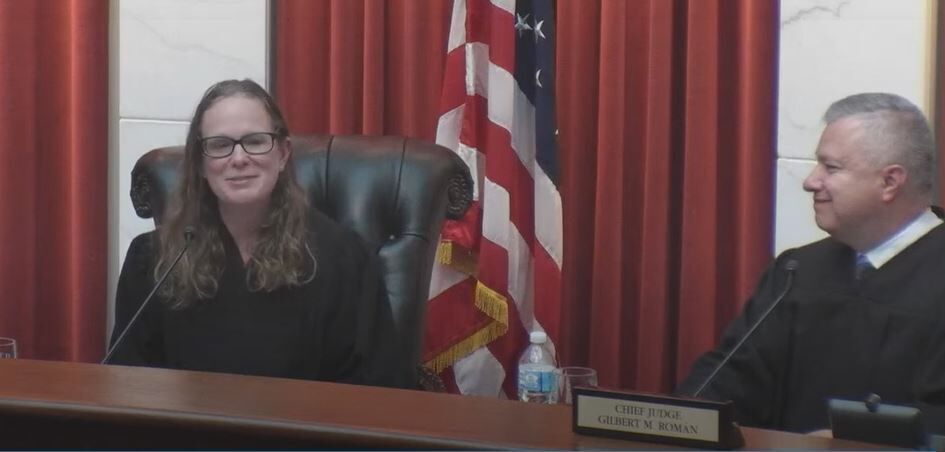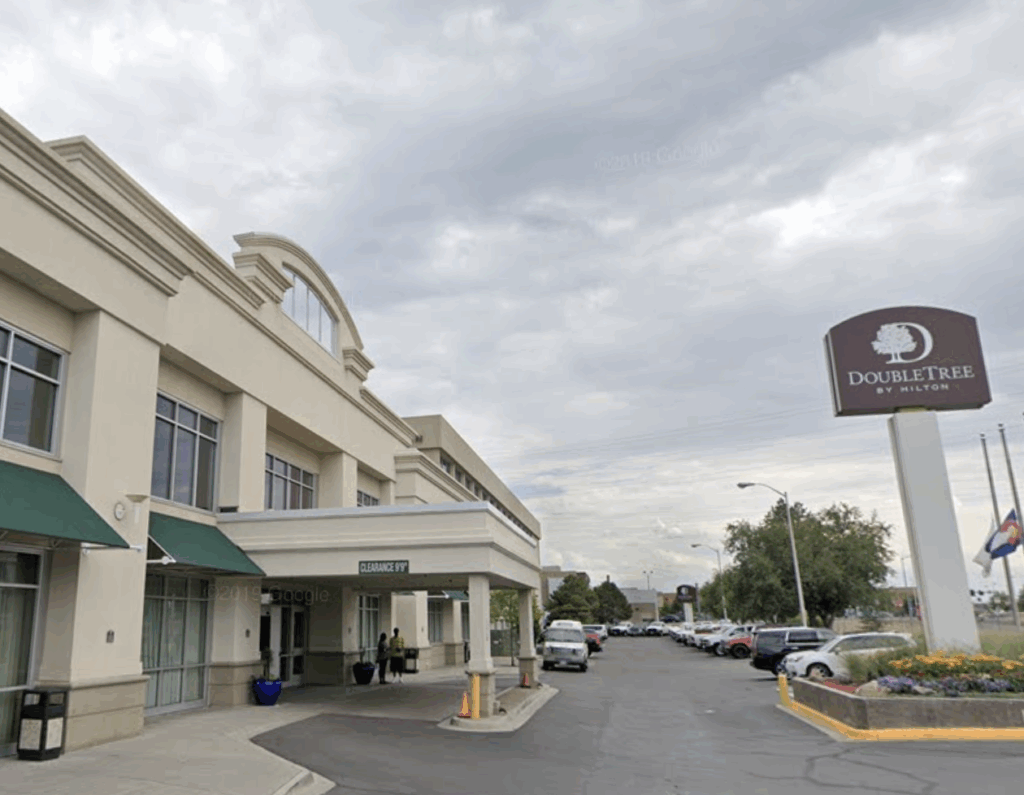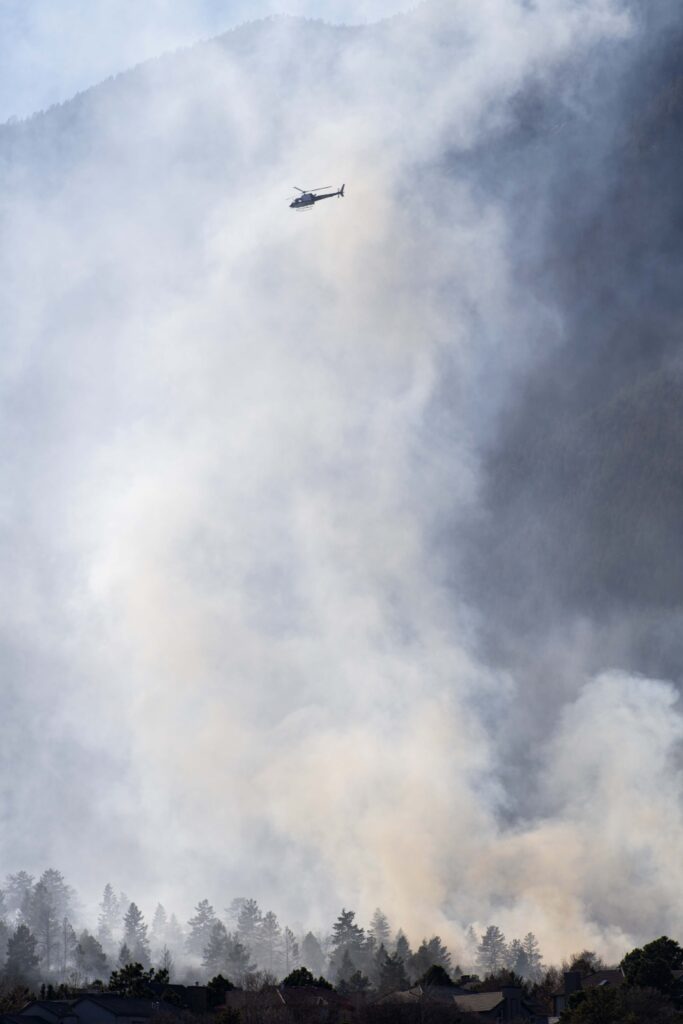National Park Service honors Underground Railroad ‘conductor’ buried in Colorado Springs
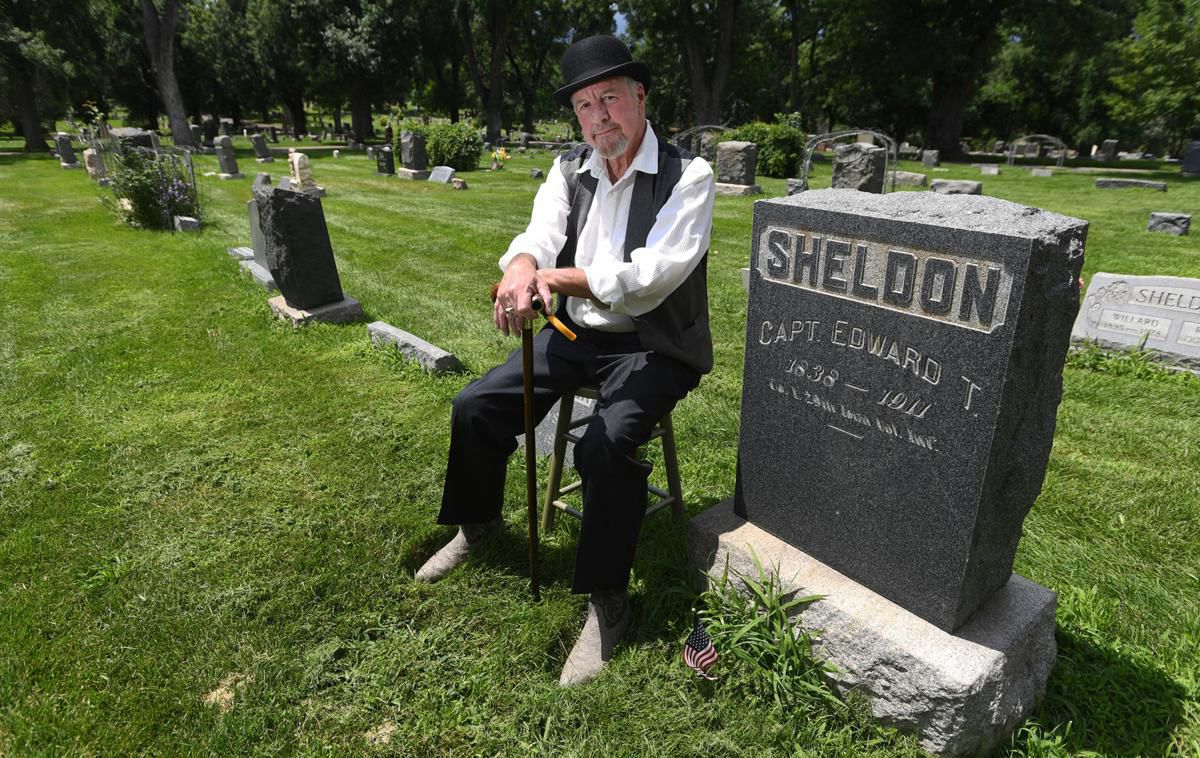
On the eve of the Civil War, a 22-year-old Iowa farmer and Underground Railroad “conductor” named Edward Thompson Sheldon – buried in Colorado Springs’ Evergreen Cemetery – set out to help four men escape to freedom.
The men – “runaway Negroes” or free men who’d been “kidnapped” into slavery, depending on where one got one’s news – had made their way north from slave-holding Indian Territory to Tabor, Iowa, an important stop in the sub rosa system of safe houses, abolitionists and sympathizers helping escapees in their flight to the free states and Canada.
Things didn’t go as planned from there, but what first seemed a dire turn of events led to a “well-attended” trial and action-packed aftermath recounted in newspapers and other historical works that now serve as a record of Sheldon’s role in a covert network whose everyday heroes largely remain unsung.
Thanks to a program Jurgensen designed and introduced eight years ago in his 12th-grade honors history class at Arlington High School, the teacher and his students are helping shine a light on the people and places that played pivotal roles in an often anonymously written chapter of America’s past.
Their work has led to the recognition of more than two dozen entries in the National Park Service Network to Freedom program, founded by congressional order 20 years ago with a goal of creating a comprehensive national map, database and “mosaic of community, regional, and national stories” about the Underground Railroad.
As of May, that mosaic includes the final resting place of abolitionist and Union Army Capt. Edward Thompson Sheldon, in Colorado Springs’ Evergreen Cemetery.
“One of the best places to recognize people is at their burial site, because sometimes there are not buildings or other locations associated with them that could be recognized,” said Diane Miller, who manages the program for the National Park Service. “I believe that scholarship about the Underground Railroad continues to expand, and we’re learning so much about what it was and how it worked by following the threads of these local stories … through people doing this hard work, documenting and researching in their communities.”
Evergreen Cemetery is, as yet, the only officially recognized Underground Railroad site in Colorado.
“Most of the Underground Railroad was done in the Midwest, with people coming up from the South and trying to get to Canada,” said Mark Robbins, who dons period garb to portray Sheldon in an annual historical speaker tour hosted by volunteer group Evergreen Heritage.
“People weren’t coming this far west, so it’s unusual to have anything in this part of the country at all. I think it’s pretty exciting.”
Doing something real
Of all the Underground Railroad figures whose stories he’d chased over the years, Sheldon’s held special resonance for Jurgensen, who came across the name and jotted it down while researching the Underground Railroad in southwest Iowa, an area near the border of free and slave states where many of the region’s headline-grabbing incidents played out.
“I really liked his story because he was a younger operative, in his early 20s, that was actually taking part and becoming an activist in the middle of the 19th century, fighting something he truly believed was wrong,” said Jurgensen, 34, who is devoted to raising awareness about modern-day slavery, or sex trafficking.
“I thought Sheldon’s story was very inspiring, especially for students. He basically personified what young activists should be doing today – not so much risking their lives, like he did, but doing something real to help fight social injustice.”
For his Forever Freedom Program, Jurgensen combined a semester of classroom learning on Reconstruction through modern U.S. history with a second-semester piece devoted to real-world experiences that teach students how to apply what they’ve learned in ways that deepen understanding and appreciation of past and current events.
To get things rolling, he presents students with a list of Freedom Network candidates once he’s identified enough of a geographic cluster to justify a road trip. Two years ago, Sheldon’s name made the list.
“We went to where he used to live and where he helped freedom seekers and runaway slaves in southwest Iowa,” said Jurgensen, whose team returned with information that helped flesh out a story of historical impact and legend-making action.
“Sheldon got caught helping those men get away and then helped them get away again after he got acquitted. It’s like one of those daring rescues you always read about.”
Awkward breakfast
On that fateful February night in 1860, Sheldon and his cohort, Newton Woodford, left Tabor with their four charges, heading by covered wagon about 50 miles to the next rendezvous in Lewis. About a third of the way there, they were overtaken by an armed posse with arrest warrants charging they’d violated the Fugitive Slave Act of 1850, which required residents and officials, even in free states such as Iowa, to cooperate in the return of captured slaves. Those who flouted the law faced stiff fines and jail sentences.
The group was taken to the county seat in Glenwood, where Sheldon and Woodford were imprisoned awaiting trial. The four freedom seekers wound up in the custody of a pro-slavery townsman, Joe Foster, who began enacting a plot to spirit them to Missouri and sell them into slavery.
Swift justice worked in Sheldon and Woodford’s favor, though. Days after their arrest, and a marathon, Sabbath-day trial that ran deep into the night, the pair was acquitted. By then, Foster, his four captives and a modest band of pro-slavery thugs were on the road, but Sheldon and 14 fellow club-wielding abolitionists chased them down and retook the men, who ultimately reached their destination of liberty.
Before that, though, the entire group – kidnappers, rescuers and rescued – returned together to Tabor for what had to be the most awkward communal breakfast ever, at a local hotel.
“When the meal was prepared, Foster and his men would not eat with the black men,” reads the bio of Sheldon submitted by Jurgensen and his students.
By the time Foster and his men realized what had happened, it was too late.
The following year, Sheldon joined the Union Army, rising to the rank of captain. He returned to his Iowa farm after the war, and later made his way to Colorado on the heels of the 1879 silver boom in Leadville.
Capt. Sheldon’s remarkable journey came to a briefly remarked end in Colorado Springs on Dec. 29, 1911.
That’s where he was, more than a century later, when the man who would carry on his living legacy arrived to tend his grave.
Deserved recognition
As a new volunteer at Evergreen Cemetery five years ago, Mark Robbins took over care of two “blocks” containing about 600 tombstones in the cemetery, home to more than 80,000 graves and a pioneer section that dates to the mid-1800s.
The cemetery is owned and operated by the city, which maintains the roads and grounds using endowment funds. But care and upkeep of the headstones fall to the families. If no one is left to do that, or descendants have moved, volunteers handle the job, as they have since 1900 and the founding of the Ladies Cemetery Aid Society.
The work can be physically demanding, but Robbins said he loves it. A big part of that has been getting to know, in a sense, the people he’s doing it for, which has happened over years of weekly visits to pluck weeds and right and restore aging stones.
“Evergreen is like an outdoor museum. It’s got the whole history of Colorado Springs in it,” said Robbins, who grew up in Security and used to pass the cemetery daily as a kid. “It looked like a park to me. I always thought it was a really cool place.”
He’d been caring for the headstones of Capt. Sheldon and his wife, daughter, son and daughter-in-law for several years. All he knew were names and dates, but that changed two years ago when research by Jurgensen and his students led them to Evergreen and the Underground Railroad hero buried there. Robbins recognized the surname and dove into research, eventually putting together an exhaustive paper and timeline, filling in details about Sheldon’s post-Iowa years, that was presented as part of the final package approved by the Network to Freedom program this year.
“He was just a really interesting man,” said Robbins, 67, who hopes the National Park Service designation will bring needed grant money that can be used for restoration at the cemetery, one of only a few on the National Register of Historic Places. “I guess you could say Capt. Sheldon inspired me.”
Even though the retired safety director and consultant had never acted a day in his life, Robbins spun the research into a script, which he uses to bring life to Sheldon and his legacy as part of the Evergreen Heritage annual historical speaker tour. This year’s event, and Robbins’ third season performing as Sheldon, is Sept. 8.
“I’m really glad that Capt. Sheldon is finally getting the recognition that he deserves, and I’m honored to be a part of that,” he said.
